UW-Madison
-
UW-Madison’s 5 hottest certificates: Students seek skills with real-world value

October 17, 2024
University of Wisconsin–Madison students are increasingly enrolling in certificate programs that can give their future careers a boost. The five fastest-growing certificates at UW are in a variety of sought-after fields, from data science to sports communication. “Advisers encourage students to get the most of their UW–Madison experience, and completing a certificate program is one […]
-
Experiential learning unlocks students’, employers’ potential
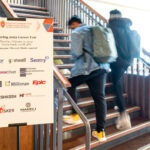
October 7, 2024
Peter Daly was a fourth-year student at UW–Madison in fall 2020 when he took the first Computer Sciences capstone course taught by Amber Field. Field had selected Daly and 25 other CS majors to participate in this pilot experiential learning class, pairing companies with self-selected teams of students to work on real-world problems. Daly found […]
-
First plasma marks major milestone in UW–Madison fusion energy research
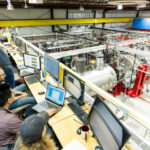
September 5, 2024
STOUGHTON, Wis. — A fusion device at the University of Wisconsin–Madison generated plasma for the first time Monday, opening a door to making the highly anticipated, carbon-free energy source a reality. Over the past four years, a team of UW–Madison physicists and engineers has been constructing and testing the fusion energy device, known as WHAM […]
-
Serendipity reveals new method to fight cancer with T cells
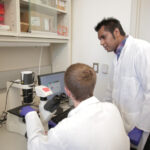
August 26, 2024
A promising therapy that treats blood cancers by harnessing the power of the immune system to target and destroy cancer cells could now treat solid tumors more efficiently. Thanks to a recent study from Dan Cappabianca and Krishanu Saha at the Department of Biomedical Engineering and the Wisconsin Institute for Discovery published in Molecular Therapy – Methods & Clinical Development, Chimeric Antigen Receptor […]
-
Bringing delight by investigating a no-melt ice cream
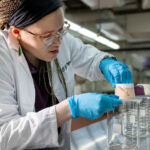
August 5, 2024
On a hot summer day, nothing hits the spot quite like ice cream, especially here in the Dairy State. But while a frozen treat can help you cool off, it also puts you in a race against the clock to finish your scoop before it becomes a puddle — or worse, a sticky mess coating […]
-
Federal funds awarded for biohealth, with UW–Madison leading the way
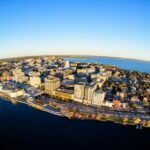
August 1, 2024
The U.S. Economic Development Administration (EDA) Tuesday announced $49 million in Phase 2 funding to the Wisconsin Biohealth Tech Hub, a groundbreaking initiative set to drive transformative medical innovation, workforce development and critical job growth across Wisconsin. The University of Wisconsin–Madison, one of 18 members of the Biohealth Tech Hub consortium, was a key partner in […]
-
UW–Madison engineers mark 3D printing milestone in race to in-space manufacturing
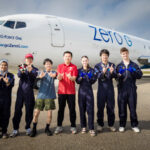
July 12, 2024
In a future scenario where astronauts chart long-distance space flights, they won’t be able to call down to earth for a shipment of replacement hardware components like they do today. Before humans can venture deeper into space, engineers will need to tackle the challenge brought by inevitable wear and tear to astronauts’ kit. Researchers at […]
-
UW-Madison research: Nanomaterial that mimics proteins could be basis for new neurodegenerative disease treatments
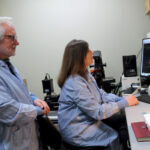
June 10, 2024
A newly developed nanomaterial that mimics the behavior of proteins could be an effective tool for treating Alzheimer’s and other neurodegenerative diseases. The nanomaterial alters the interaction between two key proteins in brain cells — with a potentially powerful therapeutic effect. The innovative findings, recently published in the journal Advanced Materials, were made possible thanks to […]
-
Pancreatic cancer is difficult to treat; nano-drugs hitching a ride on bacteria could help

May 30, 2024
Many pancreatic tumors are like malignant fortresses, surrounded by a dense matrix of collagen and other tissue that shields them from immune cells and immunotherapies that have been effective in treating other cancers. Employing bacteria to infiltrate that cancerous fortification and deliver these drugs could aid treatment for pancreatic cancer, according to newly published findings […]
-
Exceptional meteorite, plowed up from a Dane County field, finds new home in UW-Madison Geology Museum

May 21, 2024
VIENNA, Wis. — It was a balmy spring day in May 2009 when Jim Koch’s plow kicked up an unusually hefty rock. Koch was prepping a field for alfalfa on his farm in the Town of Vienna just a short drive north of Madison. At first, he didn’t notice the rock. But after stopping the […]
